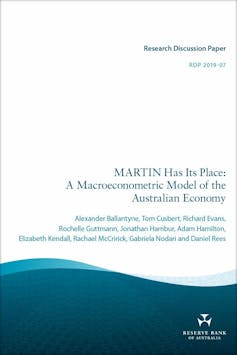Dr. Johannes Beermann, Member of the Executive Board of the Deutsche Bundesbank spoke about the future of cash at the Payment Asia Summit. Shenzen, China.
As the member of the Executive Board of the Deutsche Bundesbank responsible for cash management, I arguably very much represent what many of you may consider the “”old world of payments””. A world in which there is limited space for innovation and progress. A world that is generally high in risk but low in reward. That is what is often claimed, at least.

In giving you my European and my German perspective, in particular, let me tell you: this case is not as straightforward as it may seem. In Germany and the euro area at large, the circulation of cash remains on the rise. The Bundesbank has issued more than half of the value of euro banknotes currently in circulation. Handling and distributing cash is a major operational task performed by national central banks in the euro area – particularly the Bundesbank. This also means that we need to continue investing in our cash infrastructure.
Cash serves various economic functions – making payments is just one of them. Our estimates suggest that roughly one out of ten banknotes issued by the Bundesbank is used for making payments in Germany. This limits the size of the pie that is up for grabs by the various non-cash payment alternatives.
Let us focus on cash as a payment instrument nonetheless. Usage of cash as a means of payment is declining – this is true both internationally and in Germany. But the level of cash usage is still high in many countries – and especially so in Germany. There may be less cash around, but we are far from being cashless. So why is it that, as of yet, physical cash has not disappeared beneath the waves in the vast ocean of digital payment methods?
2. Cash as an independent means of payment
In my view, this has to do with the special features that cash offers. We regularly monitor payment behaviour in Germany to understand households’ motives for using particular forms of payment over others. Protection against financial loss, personal privacy and a clear overview of spending are crucial features that households expect from payment instruments. Cash scores favourably in all of these areas, according to our surveys. My interpretation of these results: German households value independence – and physical cash offers three unique forms of independence, which distinguishes it from digital payment systems.
First, independence from one’s socio-economic background. Cash is tactile and does not require any technical equipment. The use of cash is easily understood across the generational divide. It is this haptic nature of cash, which, in my view, is an important element of strengthening financial inclusion. Ensuring access to cash may be particularly relevant in rural areas with insufficient banking or technological infrastructures. Cash is, in that sense, also a means of safeguarding social cohesion.
Second, independence from technological ecosystems. Given the still fragmented payments landscape in Europe, cash currently remains the one truly universal means of payment when it comes to P2P transactions in the euro area. Fintech companies are shaking up the traditional banking system in Europe. These companies can often leverage their global reach and huge customer base. This may bring benefits for consumers, for instance regarding cross-border payments. But it also means that customers are becoming locked into particular payment ecosystems. Cash offers an easy way out, at least for certain transactions.
Third, independence from social control and data collection. As legal tender, cash is fully backed by the domestic central bank. Cash is the obvious choice of payment method when it comes to personal privacy. This strengthens individual freedom. At the end of the day, digital payment systems work by using personal data. Collecting data is not harmful per se. But in the age of Big Data, collecting detailed data means obtaining valuable information which, in turn, makes it possible to construct patterns of individual behaviour. From a consumer protection point of view, the question arises as to how much information is necessary to carry out a particular transaction. From an economic point of view, personal data may be seen as an additional source of transaction costs to be factored in when comparing the underlying cost structures of different payment methods.
3. Retailing – the source of future transformations?
Payment methods tend to evolve in stages. For example, the adoption of mobile payment solutions is typically preceded by the widespread use of credit and debit cards. This is the case in Germany, where contactless payments have just started to catch on. China, on the other hand, seems to be a case in its own right. A comparative study in China and Germany supports this. The evidence reported there for the year 2017 suggests that cash and debit card payments account for the bulk of German retailers’ revenue. Mobile-based payment solutions did not play a noticeable role at that time. The reverse picture emerges for Chinese consumers in major cities. Third-party mobile payment providers clearly dominate here, having leapfrogged debit and credit card payments.
Payment habits in China are still in a state of flux as payment technologies continue to evolve. Seamless payment methods are on the rise. These methods essentially try to counter the “pain of paying” with a physical smile. To what extent similar shopping experiences are becoming popular in Germany remains to be seen. There are serious concerns surrounding data protection, and these would need to be alleviated first. In my view, the transition towards a society with less cash has to be driven by the user and not the supplier. It appears that, at least in Germany, consumers value the existing diversity of payment options. Cash continues to be an important part of this. In the bank-centred financial system in Germany, commercial banks are a major actor in the provision of a payment infrastructure that can cater for both cash and its digital alternatives.
Retailing in Germany is transforming, too. On the one hand, German retailers are increasingly turning to Chinese providers of mobile payment solutions, with a particular view to increasing sales to Chinese tourists. On the other hand, retailers have also increased the scope of their activities by closing the cash cycle in Germany. Nowadays, more and more shops are providing basic banking services for their customers such as cash withdrawals and deposits at the counters. To me, this shows that the transformation of the payments landscape is anything but complete.
4 CBDC as a cash substitute?
In the digital era, it should not be surprising that central banks, too, are discussing the potential merits and drawbacks of digital forms of a central bank currency (CBDC). There are currently many operational issues relating to CBDC that remain unresolved. This pertains, for example, to the technology implemented. Blockchains and the underlying distributed ledger technology seem promising, and central banks are open to them in principle. There are several potential use cases in settlement and payment systems, for instance, which are worth exploring further. But handling and safely storing vast amounts of data does not necessarily require distributed ledgers. We need to understand the underlying technologies better in terms of operational risk.
Also, the exact set-up of a CBDC needs to be thought through as the specifications may determine the potential effects. Broadly speaking, there are two conceivable variants of a CBDC. The wholesale type restricts access to CBDC to selected financial market participants for a specific purpose. The retail type, on the other hand, could grant domestic or even non-domestic non-banks access to CBDC on a wide scale.
The wholesale variant may be seen as an improvement on existing structures in terms of processing securities trading and foreign exchange transactions, but it would have little or no effect on monetary policy. The retail variant, however, could potentially mean a paradigm shift in the economic relationships between households, commercial banks and central banks that have evolved to date. uch a fundamental shift is not free of risks, and it requires careful consideration.
There is also the question of how strong households’ appetite for such a form of CBDC would actually be. This user perspective should not be left out in the discussion.
We need to see matters in perspective. After all, many of these debates have been fuelled by the plans announced by the Libra consortium. To me, what this shows, first and foremost, is the need to offer fast and cost-efficient systems for cross-border payments. We should go one step at a time. There are already several innovative market solutions that have the potential to be transformed into an efficient pan-European digital payment solution. In addition SEPA instant credit transfers could serve as a basis for pan-European payment solutions. We should develop these systems further before contemplating further, more radical steps.
5. Conclusion
The old world of payments versus the new world. This story is not new. At the turn of the millennium, there was a strong admiration for what was referred to as the new economy in Germany. New economy was a term used to describe internet start-ups which often relied on little physical capital to generate, at times, staggering market valuations. This was in contrast to the old economy. Think of brick-and-mortar car plants with, in some cases, considerable overheads. At this point, we can say that “”the new has become a bit old and the old has become a bit new””. Economic structures have integrated. The basic market forces still apply: the companies that survive are those that are competitive and offer a unique product. I view the world of payments in very much that spirit. To me, digital payments offer exciting prospects. But that does not necessarily imply the extinction of existing payment methods. It may very well actually increase the diversity of payment methods. Cash offers these unique forms of independence from social and electronic networks, which suggests to me that it will continue to enjoy great popularity in the euro area.







